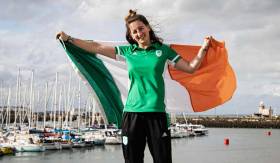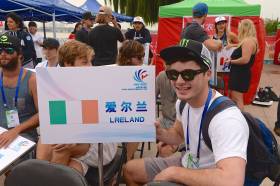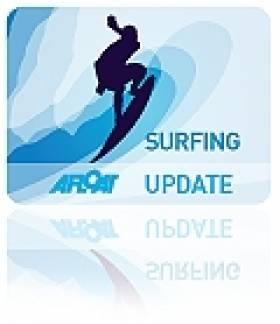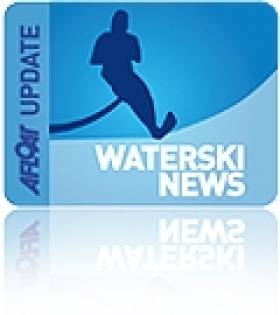Displaying items by tag: wakeboard
Two wakeboard athletes will be competing for Team Ireland at the inaugural ANOC World Beach Games in Doha, which run from the 12 – 16 October. The ANOC World Beach Games is a multi-sport event featuring all non-Olympic events, with a goal of connecting National Olympic Committees and fans around the world and bringing a different range of sports to a wider audience.
Ireland’s leading wakeboarders David O’Caoimh and Nicole Carroll will be joining 1237 athletes from 97 countries in the Qatar capital. The wakeboard qualifiers take place on Sunday 13 October with the medals being decided the following day.
From Shercock in Co. Cavan, O’Caoimh is a three-time European Champion, and has been competing as a pro for six years. The 25-year-old’s local riding spot in Ireland is Lough Sillan, where he first learnt to waterski, the same lake on which teammate Carroll trains. 19-year-old Carroll is currently ranked number one in Ireland, and at the 2018 European Championships finished in fifth place.
Wakeboarding is a sport that was developed in the 1980s and is a combination of water skiing, snowboarding and surfing, where a rider is towed along by a boat while riding on a board. During their event the rider performs jumps and techniques, and are awarded points based on execution, composition and intensity by three judges who are sitting in the boat.
“It’s great that Ireland can be part of this historical event,” said Linda O’Reilly, Chef de Mission for the ANOC World Beach Games. “ANOC are very keen to showcase beach sports to the world – and are using this inaugural Games to engage with a new audience and to showcase the sports stars and achievements of these sports.”
“I’m excited about working with a new sport in wakeboarding. David and Nicole are pros and have been competing on the international circuit for years. They are ready and looking forward to the competition.”
The qualification round of both events take place on the 13 October, and the finals take place on the 14 October.
ANOC is an umbrella organisation for the National Olympic Committees around the world.
TEAM IRELAND
Wakeboarding
David O’Caoimh (Cavan) Men’s Open Wakeboarding
Nicole Carroll (Cavan) Women’s Open Wakeboarding
Irish Wakeboard Star David O'Caoimh Has High Hopes in China
This coming weekend will see the very best in the sport of Wakeboard from eleven countries competing for the coveted International Waterski & Wakeboard Federation (IWWF) World Cup title in what will be the 46th Stop of this highly successful global series. The series includes Dun Laoghaire based wakerboarder David O'Caoimh from Killiney. Afloat.ie readers will recall O'Caoimh's training exploits at Dun Laoghaire Library last March.
The World Cup programme kicks off this Friday at Noon with Pro Women’s Wakeboard Practice followed by the Pro Men. The magnificent Linyi Waterfront Stadium was purpose built five years ago for the World Cup Series. Located in Shandong Province on the banks of the Yi River between Beijing and Shanghai, Linyi City’s history dates back over 2,400 years. Today it is a major Wholesaling centre in China.
On Saturday, the Riders will attend the Official Opening Ceremony on site at 09.00hrs – always quite a spectacular display on both land and water. This will be followed by the Quarter-Finals and Last Chance Qualifiers rounds. The following nations will be represented: Australia, Canada, China, France, Great Britain, Ireland, Italy, Japan, Republic of Korea, Mexico and USA.
Weather forecasts are good with 26C / 80F and sunny skies predicted.
Australia and USA have certainly fielded top quality Riders with both experience and past performances on their sides. Included from Australia will be Cory Teunissen, Dean Smith, Tony Iacconi, Nicolas Rapa, Chloe Mills and Amber Smith. Cory Teunissen has to be a hot favourite having taken the previous World Cup title plus the 2016 Nautique Wake Series in Toronto a few weeks ago. The very strong contingent of USA Riders will include Steel Lafferty, Daniel Powers, Mike Dowdy, Daniel Thollander, Tarah Benzel Mikacich and Taylor McCullough. Both Taylor McCullough and Tarah Benzel Mikacich are rarely off the podium and expected to push hard for honours at this World Cup Stop.
On Sunday, a Waterski Show will start the day at 09.00hrs, followed by the Wakeboard Semi-Finals and Finals. The Awards Ceremony at the Grandstand is scheduled for 15.45hrs.
Wakeboarding Through The Monaghan Floods
One opportunistic Wakerboarder made the most of the floods at the traffic lights in Monaghan town. The high speed water dash was captured by Facebooker Eveyln Boylan and has been shared over 30,000 times since posting on December 30!
20 Countries (including IRL) for Wakeboard World Cup
Founded by a representative of the Sultan of Brunei in 1827, Kuching City is the largest on the exotic island of Borneo. Ireland is in the line up with Sian Hurst and David O'Caoimh. This tropical location, with the support of the Sarawak State Government represented by the Ministry of Tourism and Heritage, Sarawak, will host this 31st World Cup Stop of the International Waterski & Wakeboard Federation (IWWF) and Waterski & Wakeboard World Cup Sdn.Bhd. Initial event details were released at a Press Conference last January in Kuching and all preparations have now been completed.
The IWWF World Cup Series was established to bring the very best Waterski and Wakeboard athletes to important high population centres around the world. To date these have included London, Paris, Alexandria, Moscow, Beijing, Singapore, Doha, Liuzhou, Chuncheon, Putrajaya, and many others. Following this Kuching Wakeboard World Cup Stop, it will move on to Linyi in China.
This Stop will include Wakeboard and the Stars of Florida, a spectacular Show Ski Team from Florida, USA. They will join the Malaysia Day Celebrations in a water parade on the Sarawak River on the night of September 16th which will culminate with riverside fireworks displays.
Not only has this Kuching World Cup Stop been scheduled to coincide with the Malaysia Day celebrations, it will also form part of the birthday celebrations of the Governor TYT Yang Di-Pertua Negeri Sarawak. For the first time it will also be staged in conjunction with the historic 2011 Sarawak Regatta right in the centre of Kuching City. Dating back to 1872, the Regatta attracts an enormous variety of colourful boats including Dragon Boats, Long Boats, etc. During the four days involved, over 100,000 spectators are expected, plus 400 boats 6,000 paddlers - and of course the very best World Cup Wakeboard Riders from 20 countries. The unique combination promises to make this one of the most spectacular World Cup Stops to date.
The special MasterCraft X2 Wakeboard competition boat has already arrived in the Port of Kuching and will play its vital part throughout the World Cup Stop on the Sarawak River.
For those not fortunate enough to be able to attend the 2011 celebrations in Kuching, they will nevertheless be able to enjoy both a FREE STREAM live Webcast from the waterfront and also replays after the event. The time zone is GMT + 8 hours. The Webcast Links are as follows :
LIVE :
http://247.tv/waterski/freestream/2011-sarawak-wakeboard-world-cup/
LIVE REPLAYS :
http://247.tv/waterski/2011-sarawak-wakeboard-world-cup/
Following this Kuching World Cup Stop, the IWWF will distribute an edited TV highlights show to over 500 million viewers and Media Releases to 192 countries. Both Kuching City and this 31st World Cup Stop on September 15/18 will give a great insight to both the special attractions of Sarawak and the extraordinary skills of the World Cup Riders.
The local times of the Wakeboard World Cup programme are as follows :
(GMT+8hrs) :
September 16th - FRIDAY
07.30 - 11.30hrs
Wakeboard - Practice & Semi-Finals
September 17th - SATURDAY
08.00 - 11.30HRS
Wakeboard - Sarawak Youths / Men Quarter Finals / Women LCQ
15.30 - 16.30hrs
Wakeboard - Men LCQ
17.00 - 17.45hrs
Stars of Florida Ski Show
September 18th - SUNDAY
09.00 - 10.00hrs
Wakeboard - Men Semi-Finals
10.00 - 11.00hrs
Wakeboard - Women Finals
11.00 - 11.45hrs
Stars of Florida Ski Show
12.00 - 13.00hrs
Wakeboard - Men Finals
15.000 - 15.45hrs
Stars of Florida Ski Show
16.00 - 17.00hrs
Medals Presentation on sit
Two Irish Riders Achieve Major Wakeboard First
Wakeboard history has just been made by our two most talented Irish Team Wakeboard Riders. Against the very best Wakeboard Riders in the World and also against fierce international competition for these prestigious invitations, the International Waterski & Wakeboard Federation World Cup Selectors have invited Sian Hurst (Belfast) and David O'Caoimh (Dublin) to take part in the World Cup Series for the very first time. Congratulations to Sian and David on this major international recognition.
In the coming days, Sian and David will board their long haul flights from Dublin for Kuching City in Sarawak, Borneo. This will be the 31st World Cup Stop in this very successful Series. To date, it has travelled through London, Moscow, Alexandria, Singapore, Beijing, Doha, Chuncheon, Liuzhou and many other exotic venues, including Enniskillen ! The Series will finish this year in Linyi City in China immediately after the Sarawak Stop.

Sian
Sian and David have shown enormous progress in recent times. Their World Cup selection is very well deserved. They will join the current World Wakeboard Open Champions, Harley Clifford AUS and Raimi Merrit USA and will compete against a star studded line-up of 30 athletes from 20 countries. This will be by far the biggest challenge ever for any Irish Team Rider and they are well prepared for this extraordinary test.

Sian and David
Twenty one year old Sian Hurst recently took the Gold Medal at Chill & Ride Challenge in Germany, the Silver Medal in the World Championships in 2007 and the Bronze Medal at the European Championships in 2008. She has been the Irish National Wakeboard Champions from 2007 to 2011, in spite of a knee injury last year. Seventeen year old David O'Caoimh is the reigning Irish National Wakeboard Champion, and this year alone has taken the Gold Medal at UK Wakestock and a Silver Medal at the World Championships in Italy.

David
The Kuching City World Cup Stop will be a very special experience. It will form an important part of the historical Sarawak Regatta founded in 1872. Over 400 elaborate canoes, dragon boats and long boats will have 6,000 paddlers on board ! There will be a LIVE Webcast and for those who want to share in the thrills and performances of Sian and David, here is the Link to bookmark for Saturday and Sunday, September 17th/18th. Sarawak is GMT +8hrs.
http://247.tv/waterski/freestream/2011-sarawak-wakeboard-world-cup/ <http://247.tv/waterski/freestream/2011-sarawak-wakeboard-world-cup/>
One of the organisers is Irish Waterski & Wakeboard Federation President, Des Burke-Kennedy, and he will be reporting back here throughout the World Cup Series as usual.
After Sarawak, David has also been invited to move on to Linyi City in China for the final World Cup Stop of the year. Sian may yet get an invitation there if anybody falls off that Entry List.
Congratulations to both Sian and David - and good luck in this amazing World Cup experience.
Dublin Student Takes Gold At Wakeboard Music Festival
The Wakestock Music Wakeboard Festival staged at the weekend in Abersoch in Wales is the biggest of its kind in Europe. The top Wakeboard Riders in the World compete at Wakestock and with the Wakeboard World Championships in Milan, Italy, just a week away, all eyes were on the major contenders.
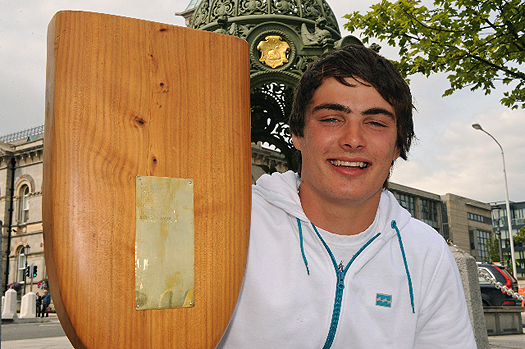
Dublin's David O'Caoimh takes gold medal at Wakestock 2011 at Abersoch in Wales
The Irish Wakeboard Team for the World Championships has already been selected by the Irish Waterski & Wakeboard Federation. Included in this team are Riders David O'Caoimh and Sian Hurst. Both travelled to Wakestock this weekend to help prepare for the World Championships - and both have taken the Wakeboard world by storm in the past 24 hours.
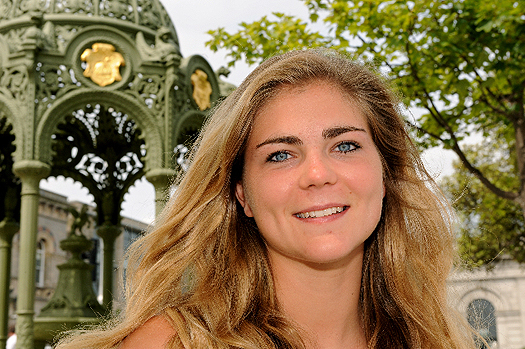
Belfast's Sian Hurst takes bronze medal at Wakestock 2011 at Abersoch in Wales
Stepping off the Ferry at DunLaoghaire a few minutes ago, they were still celebrating their outstanding results. With over 25,000 spectators at Wakestock, O'Caoimh beat 24 international ProMen Wakeboard competitors and carried the Wakestock Trophy and gold medal back to Dublin. Beating Finalists from Thailand, USA and Great Britain, the Irish Rider caused a sensation with perfect performances of ten highly complicated tricks on the choppy Abersoch waters. Hurst added to their great weekend by taking the bronze medal in the ProWomen category with yet another outstanding performance. These are two of the best results ever achieved by Irish athletes on the international Wakeboard circuit.
President of the Irish Waterski & Wakeboard Federation, Des Burke-Kennedy, was at the DunLaoghaire Ferry Terminal to welcome them home this morning. "With the World Wakeboard Championships in Italy just a week away, the Irish Wakeboard Team will certainly be one to watch next week" he stated.


























